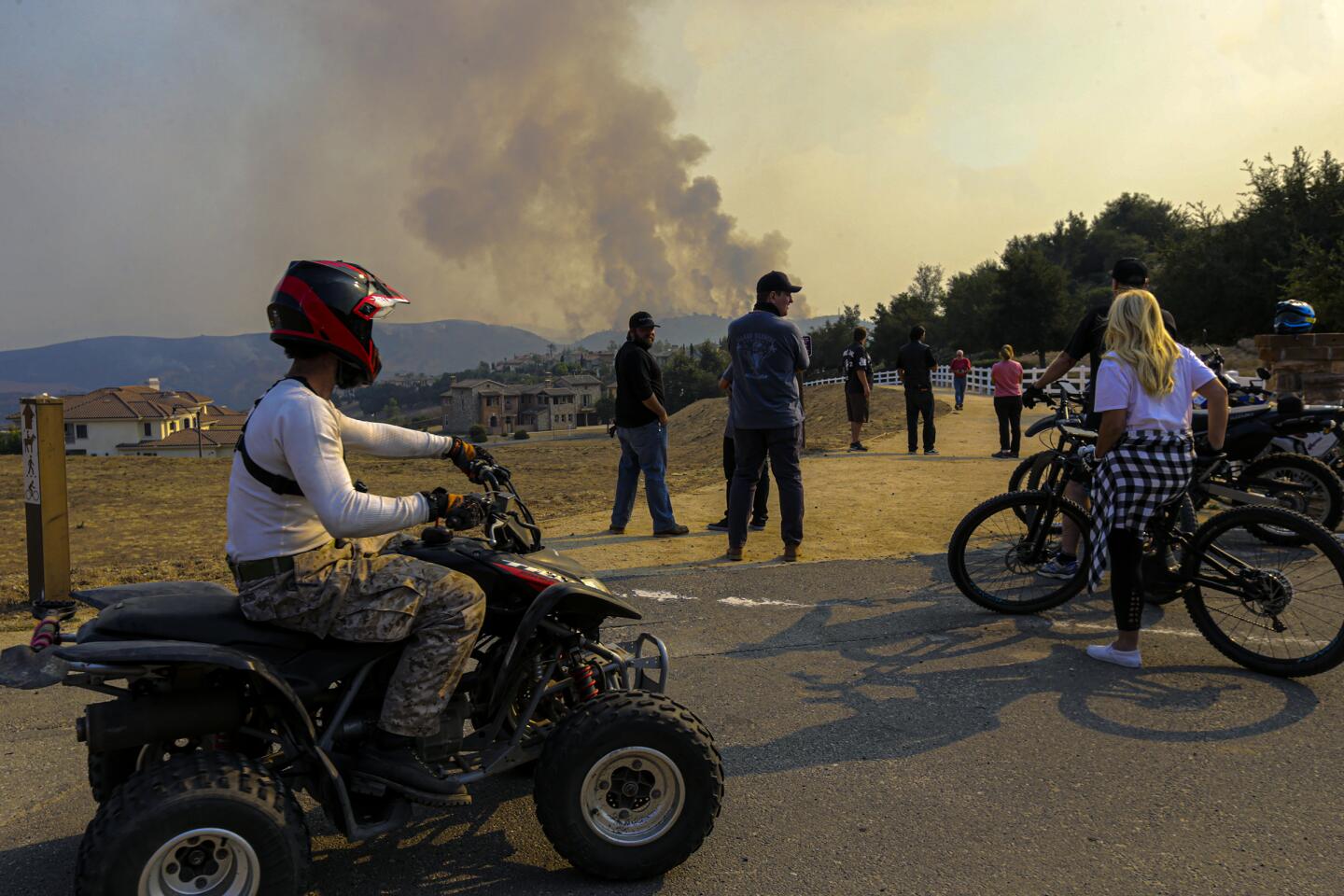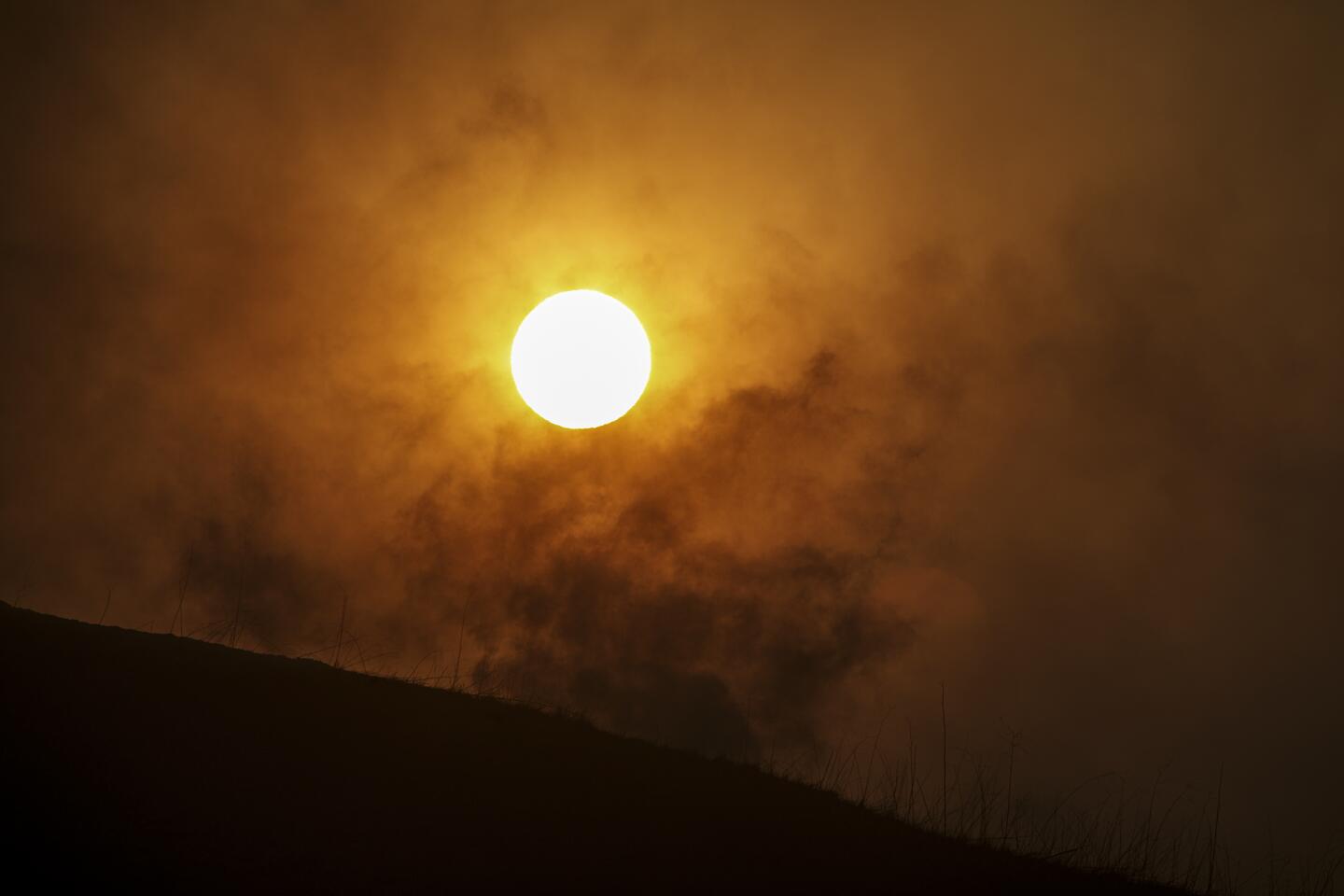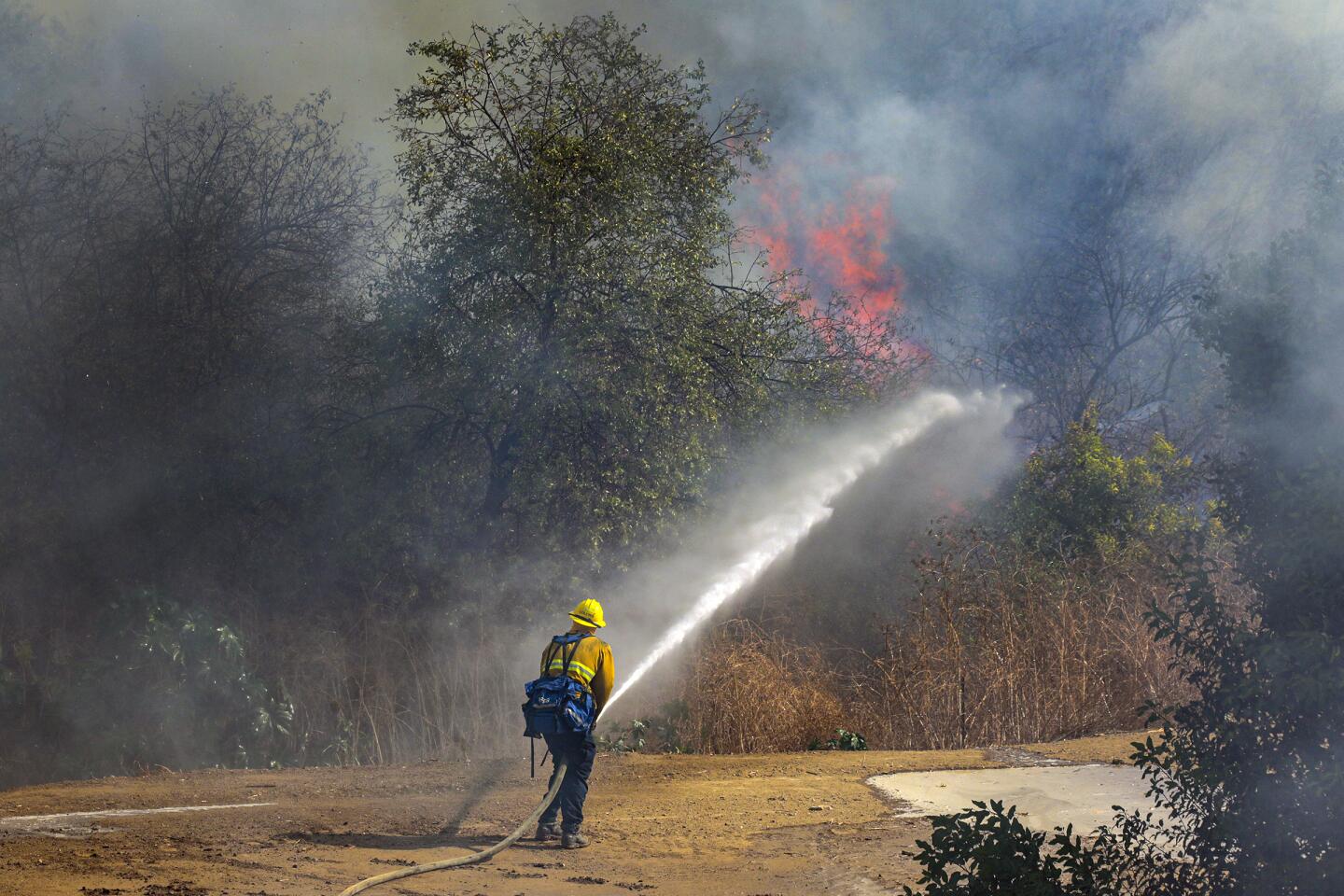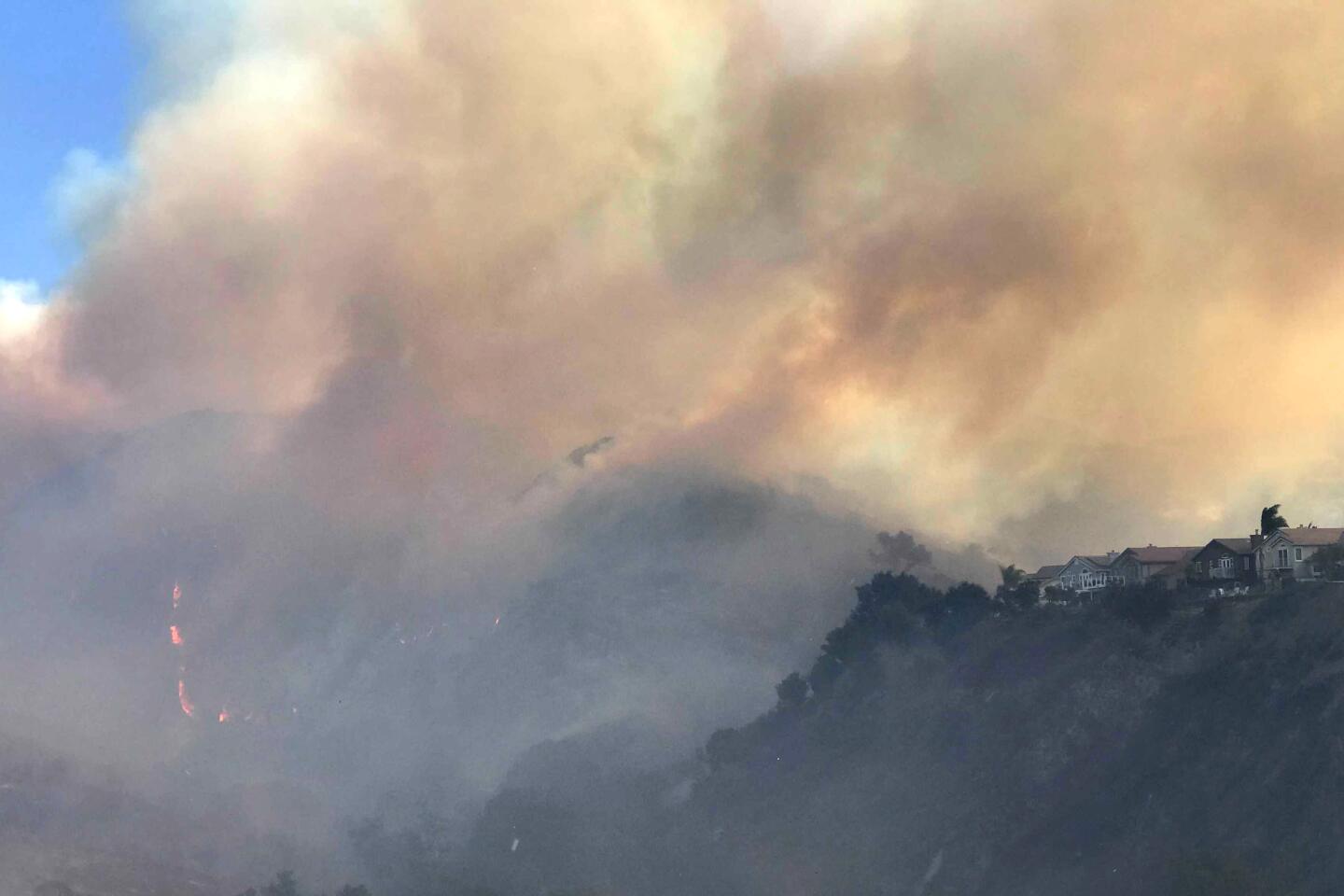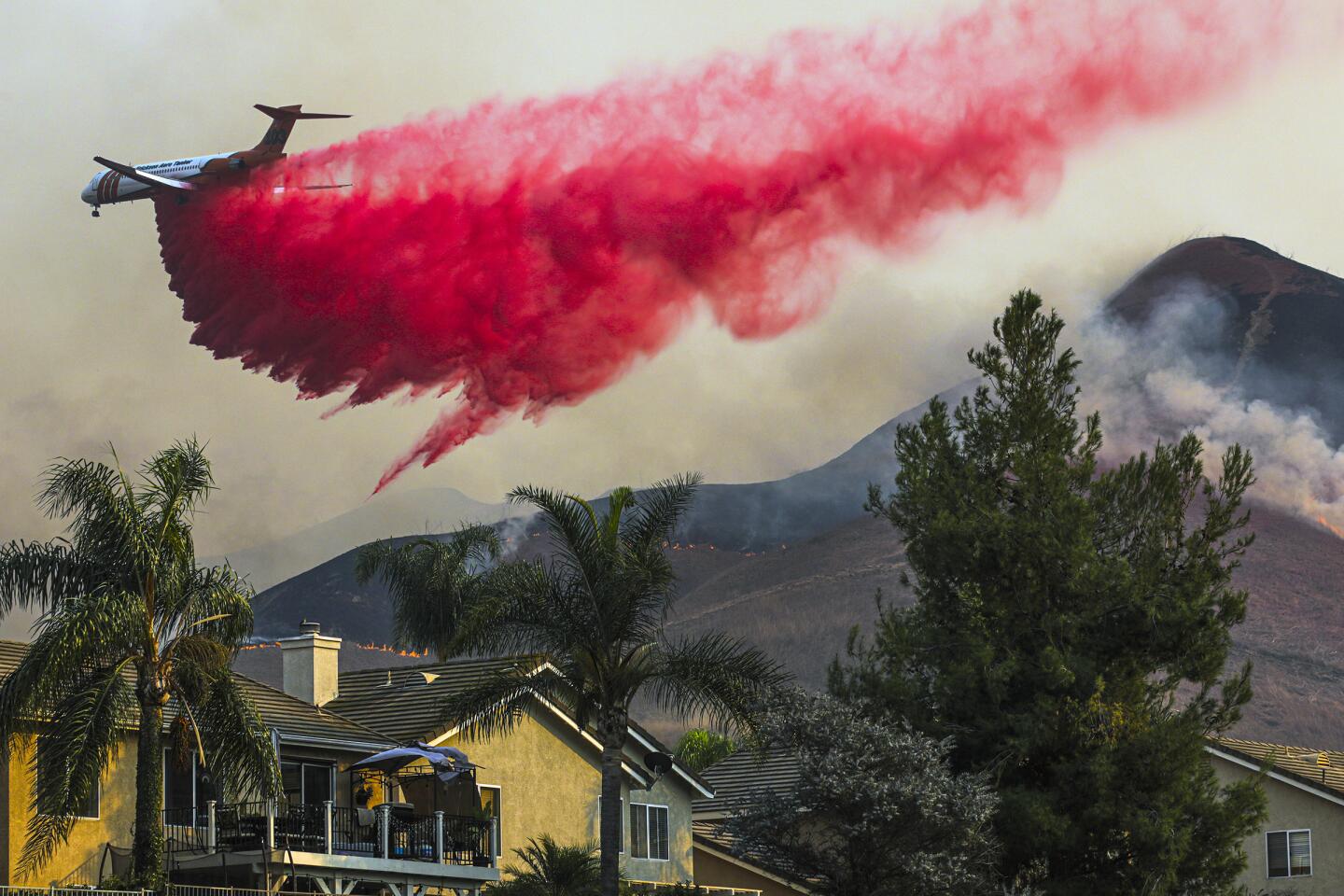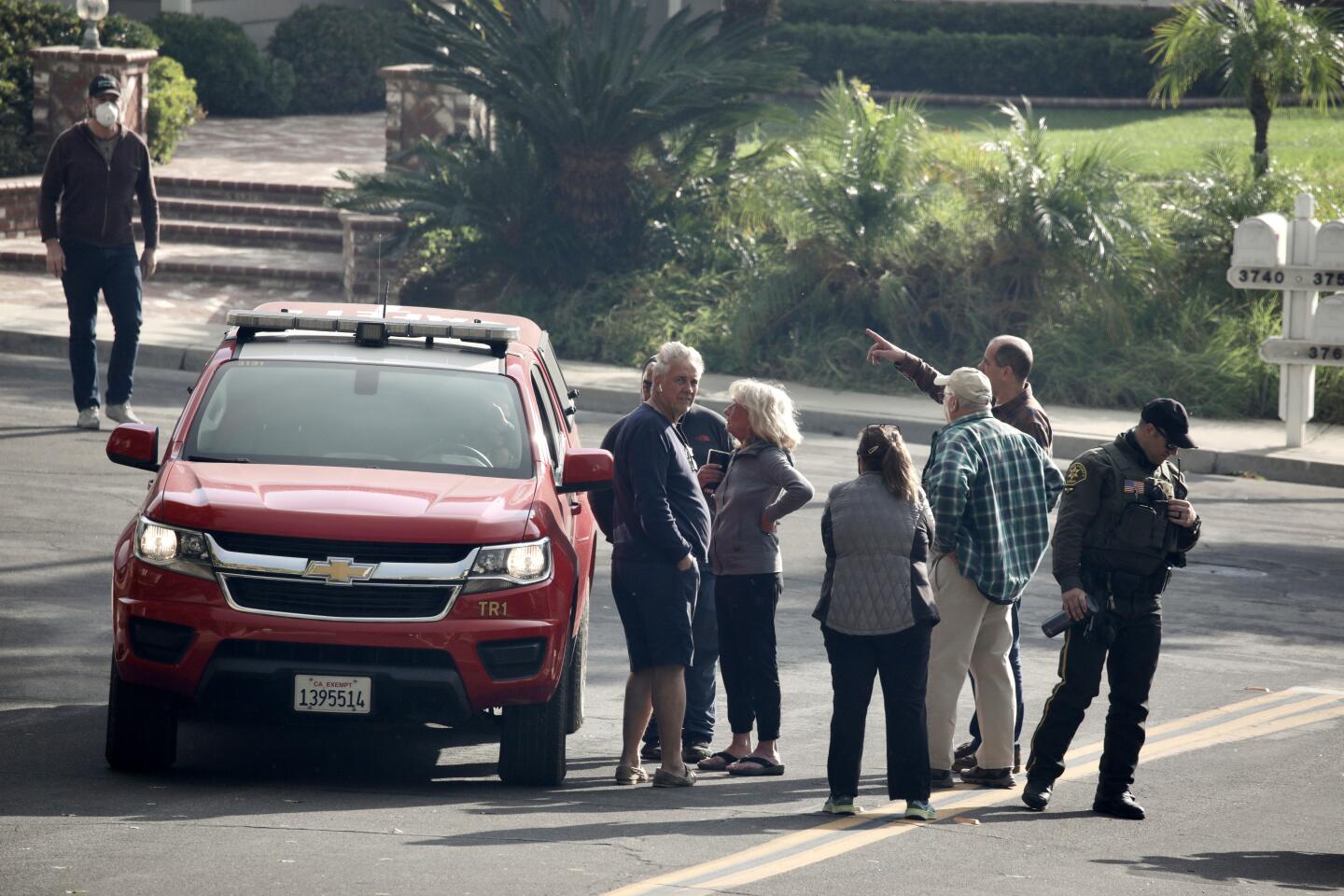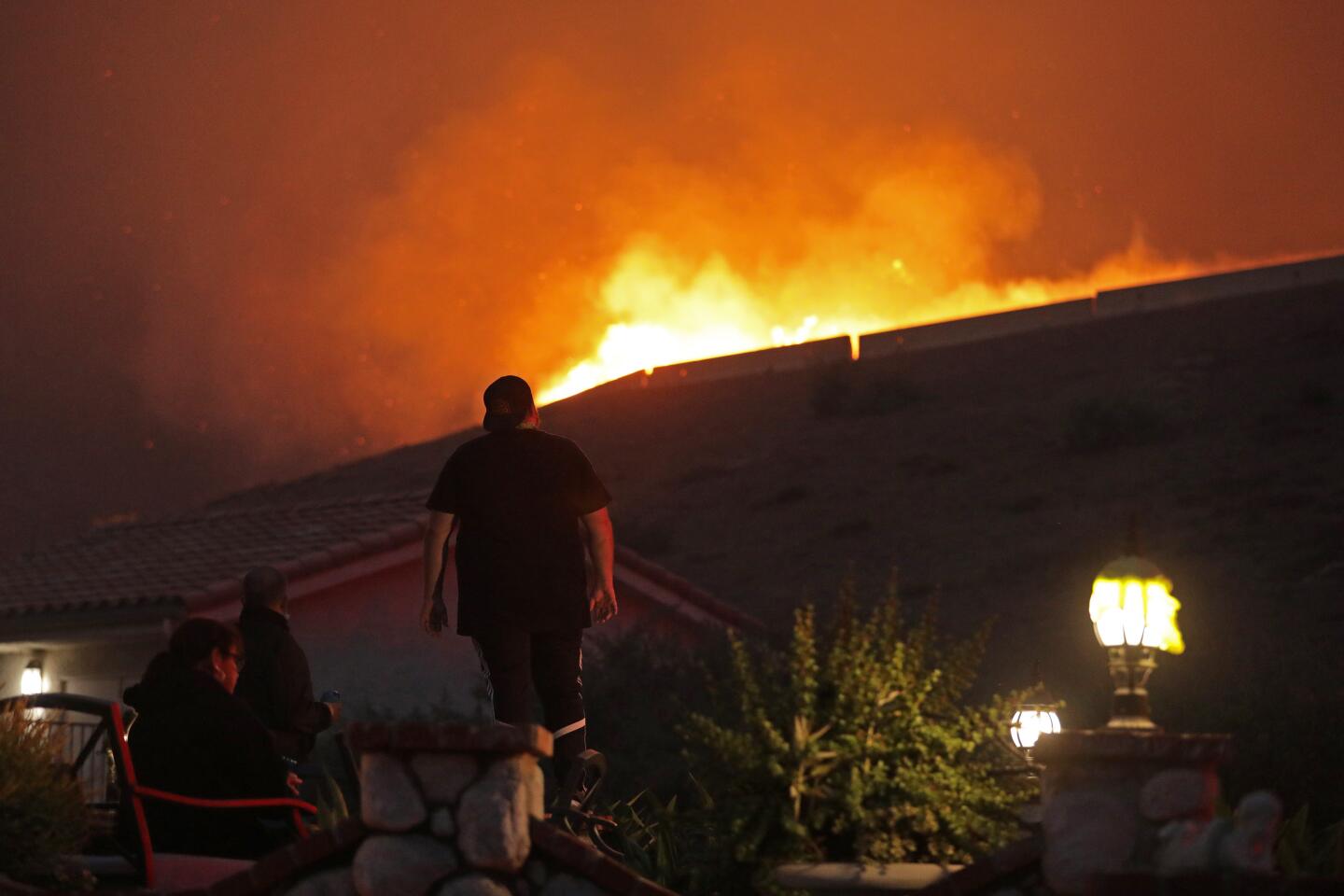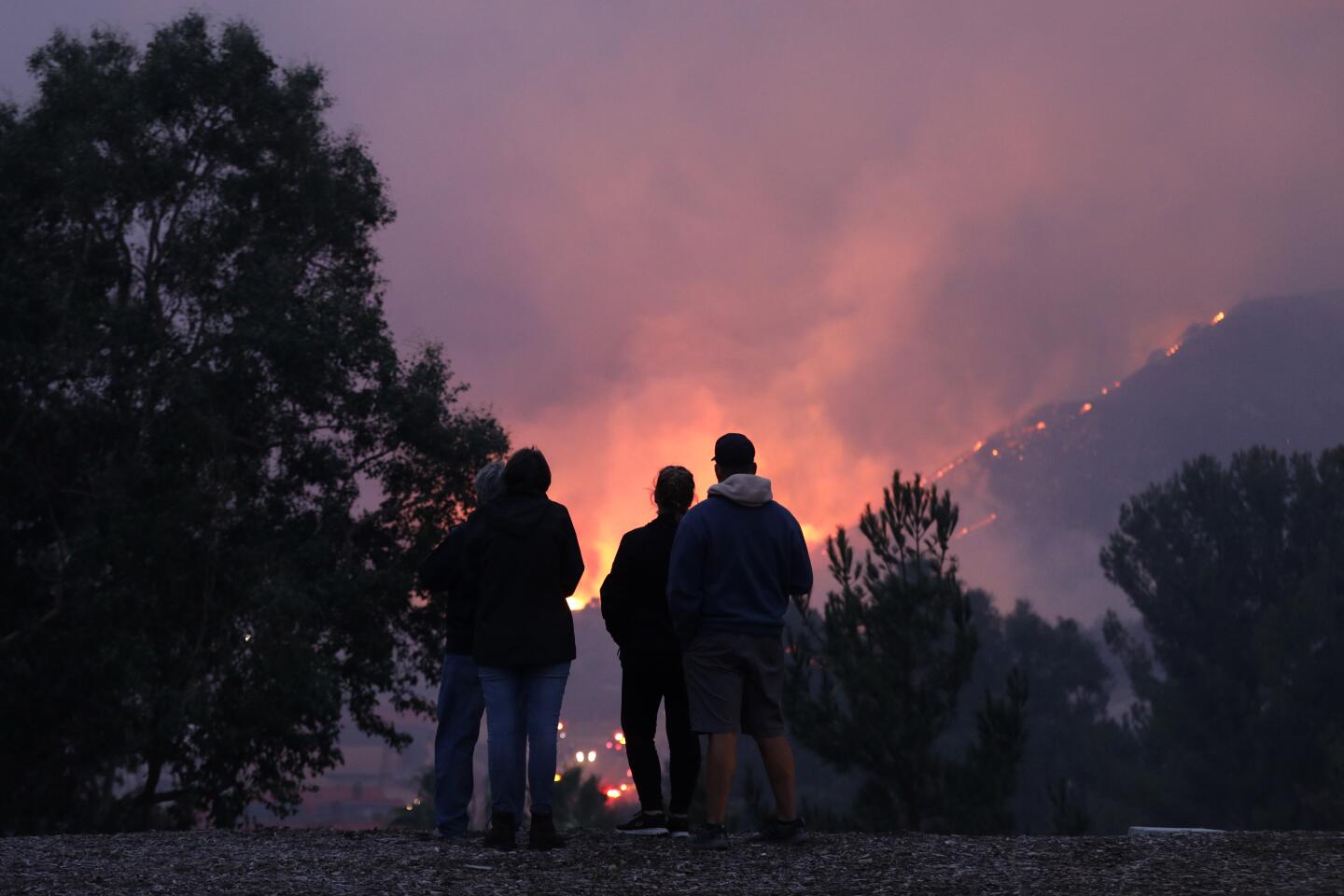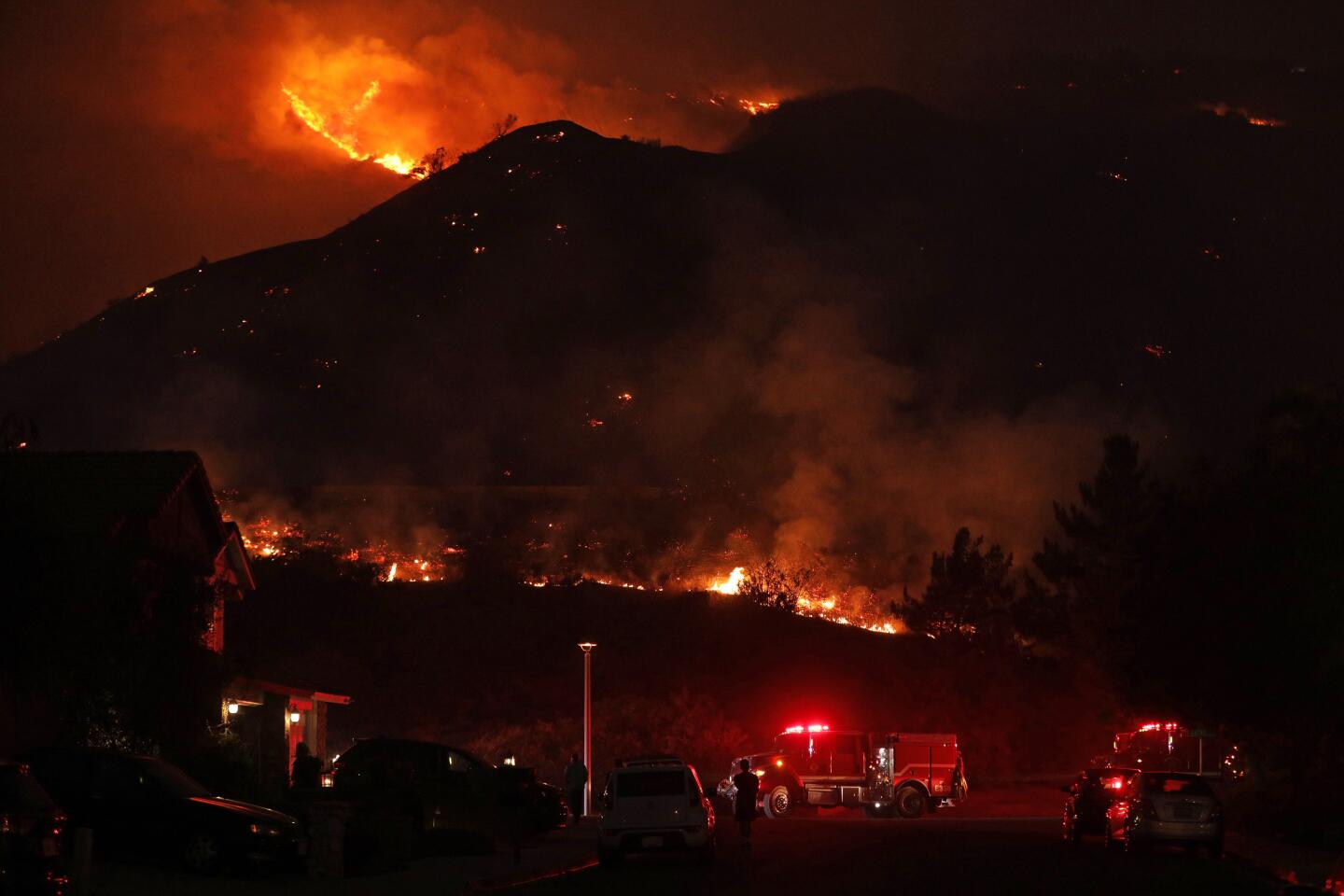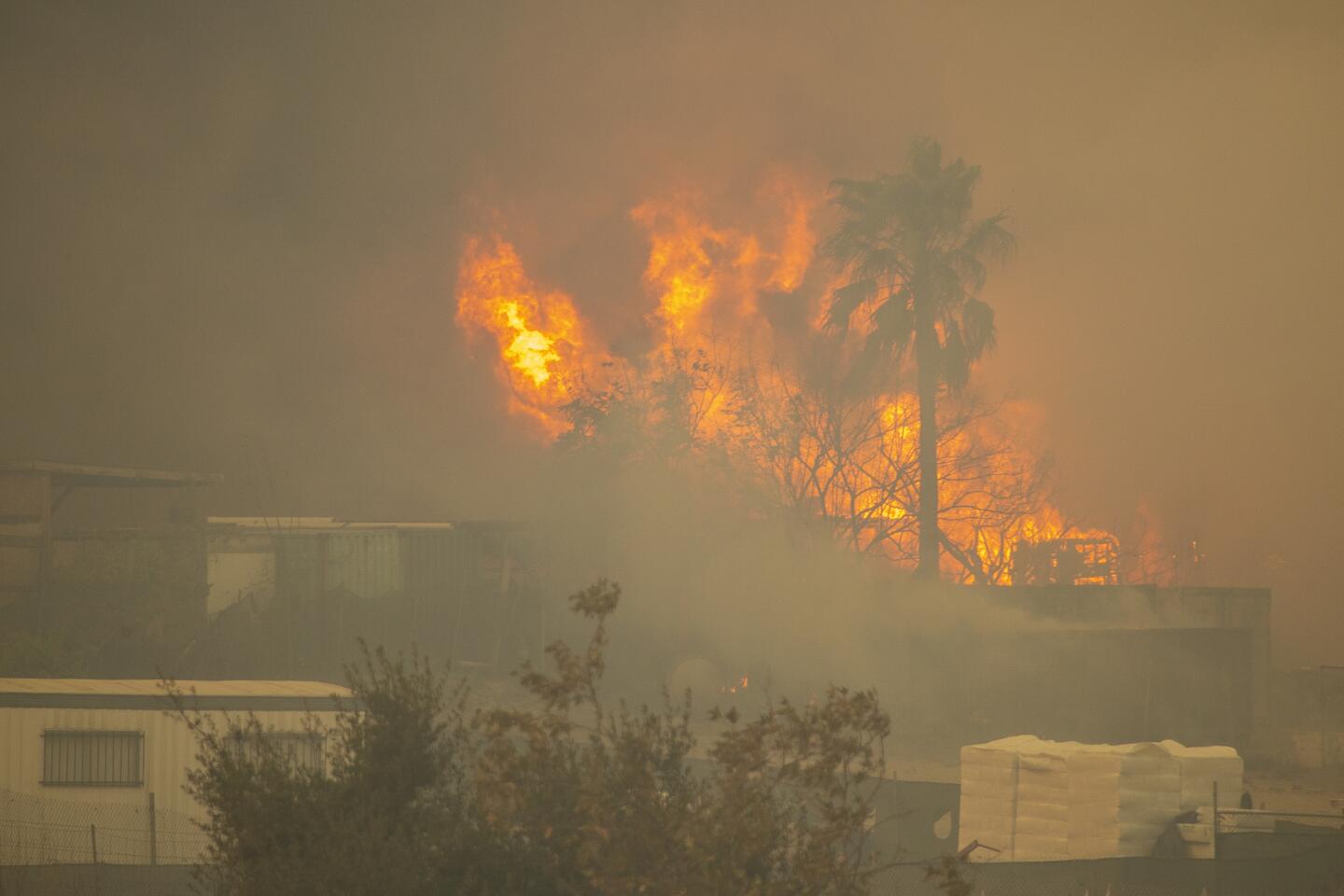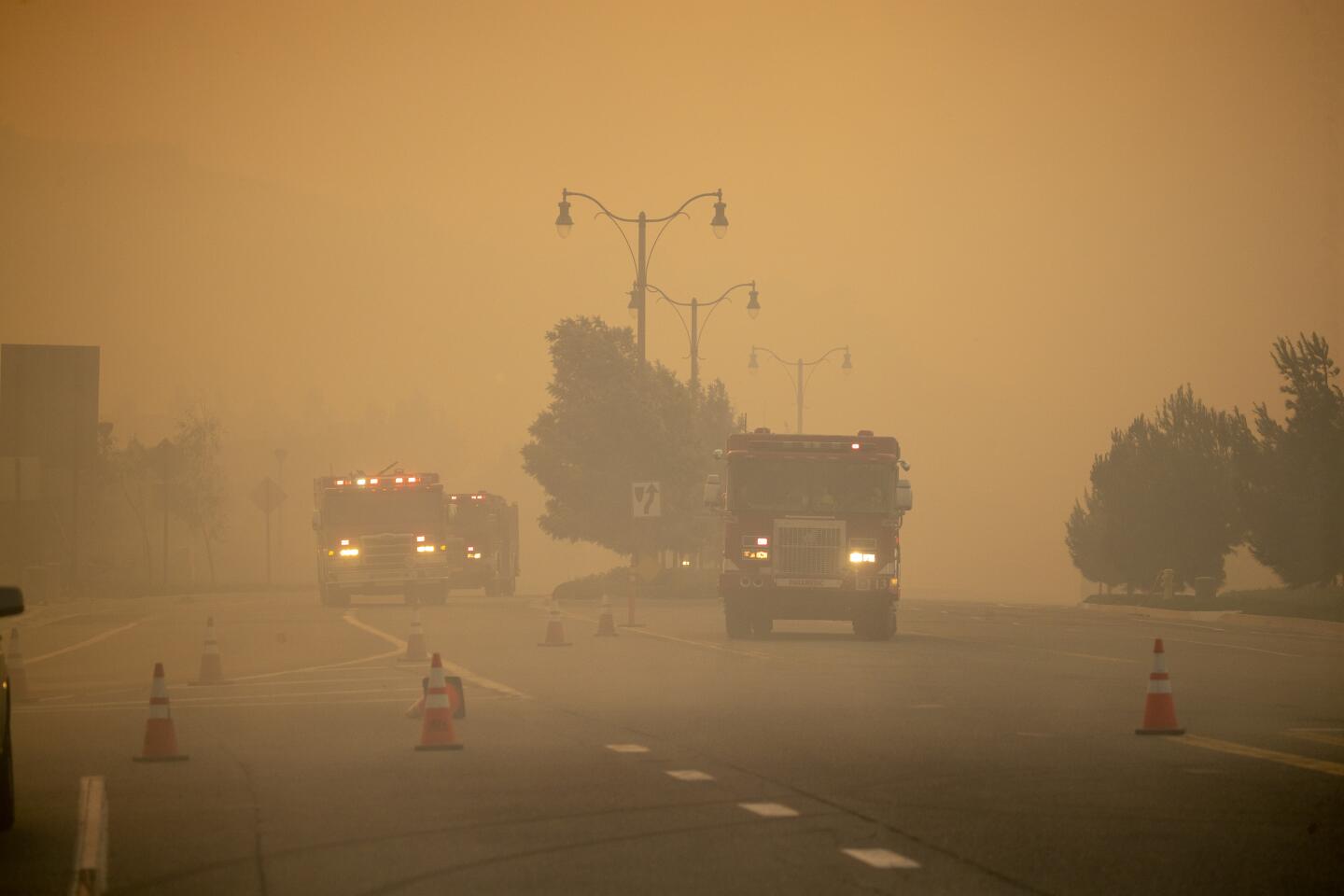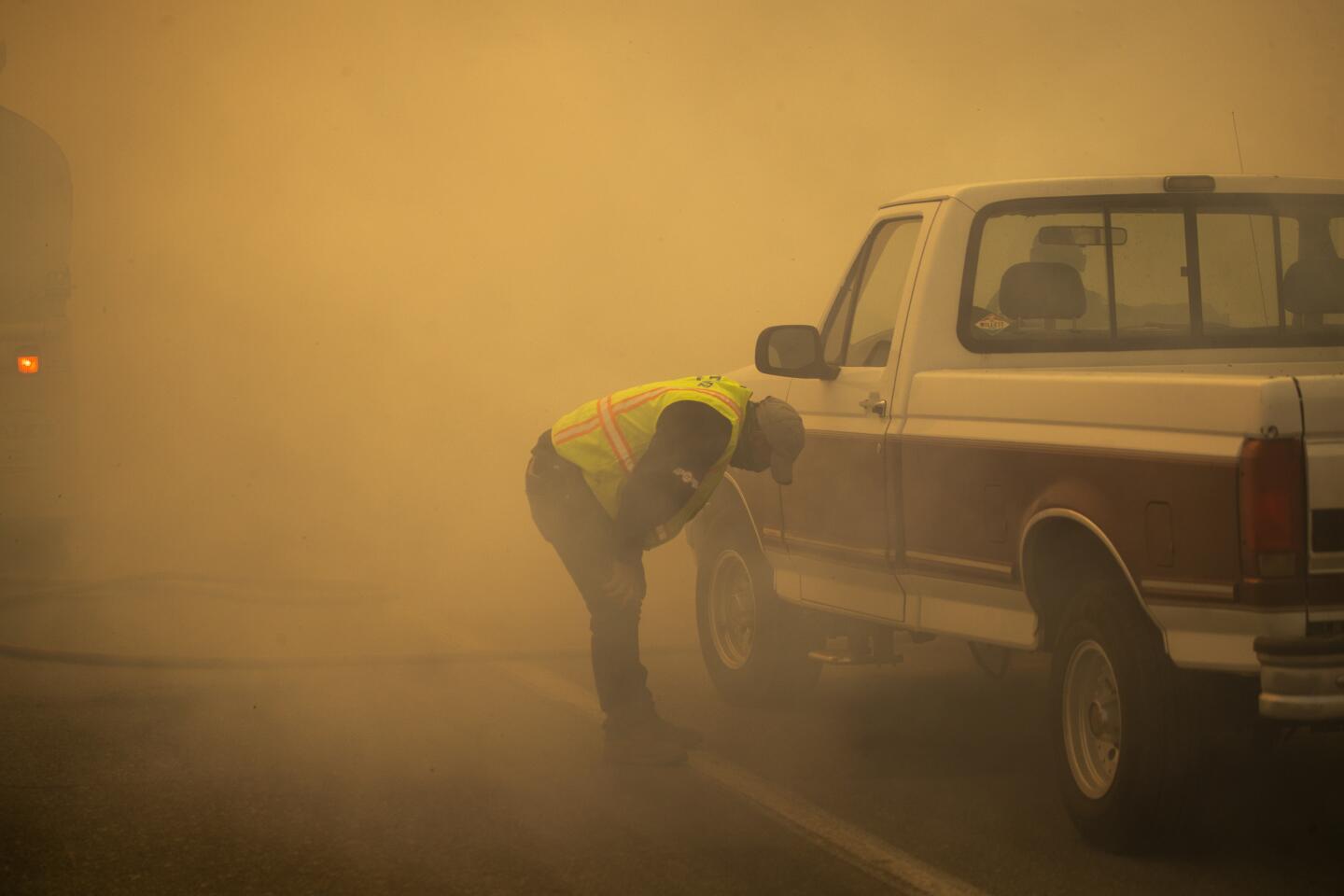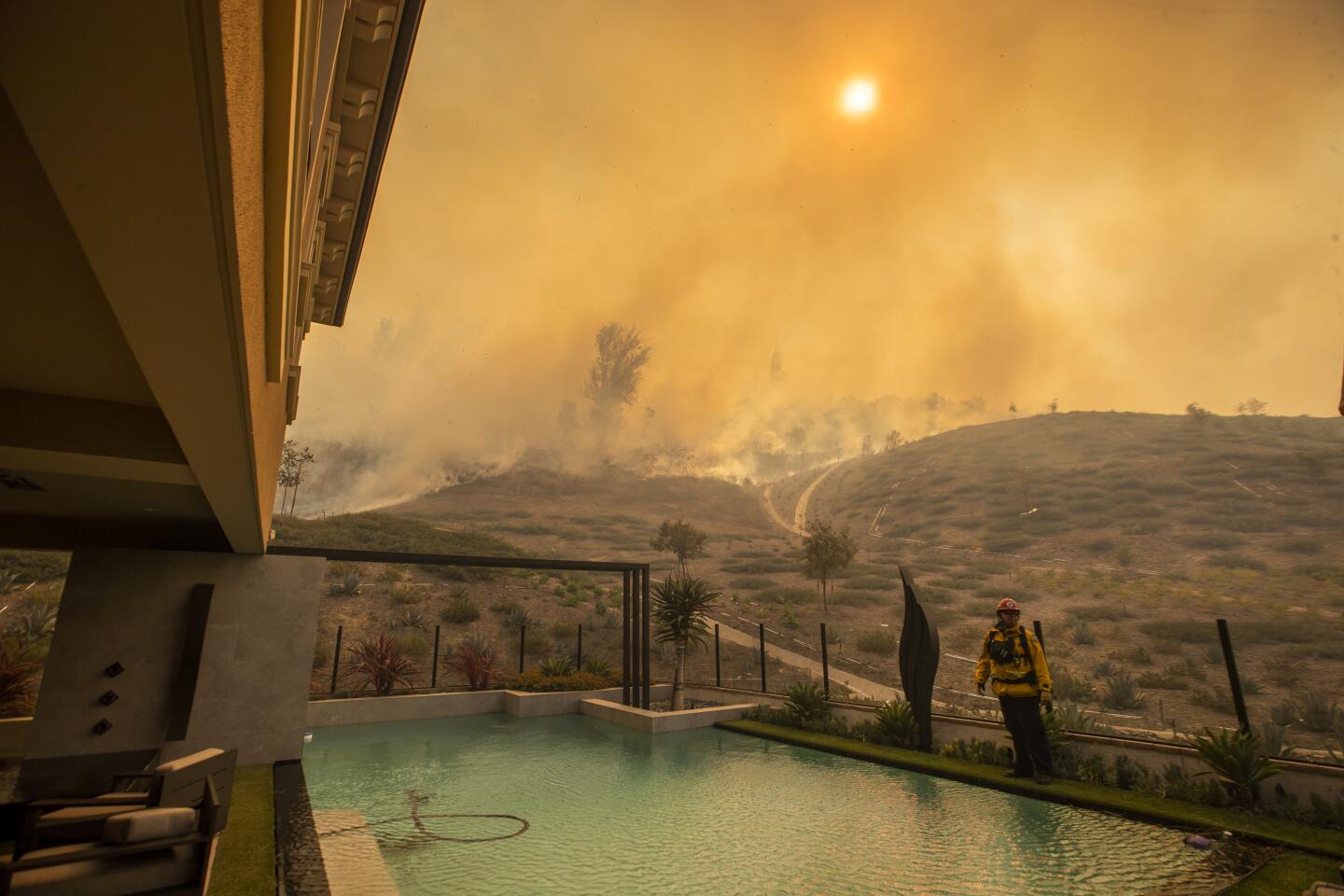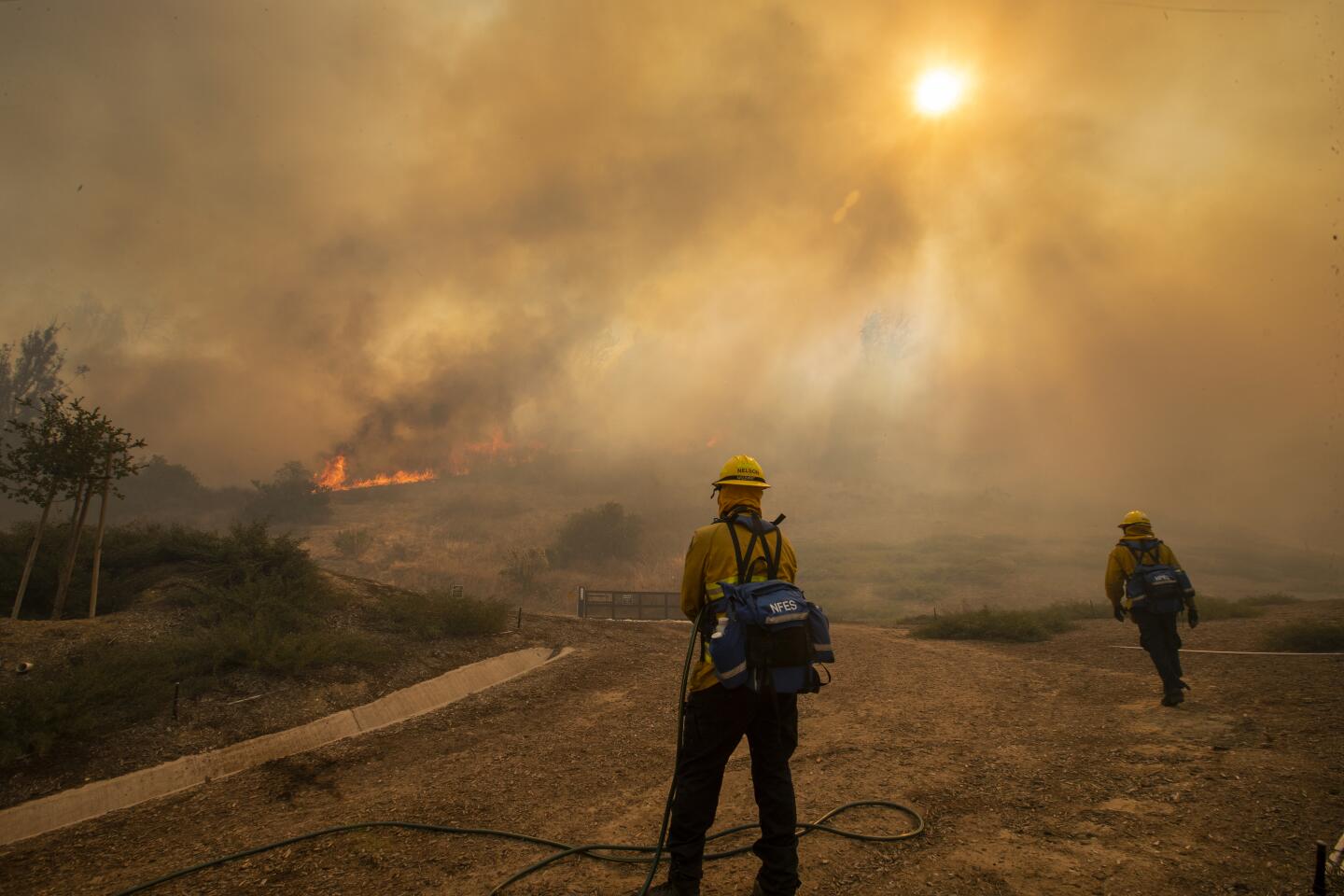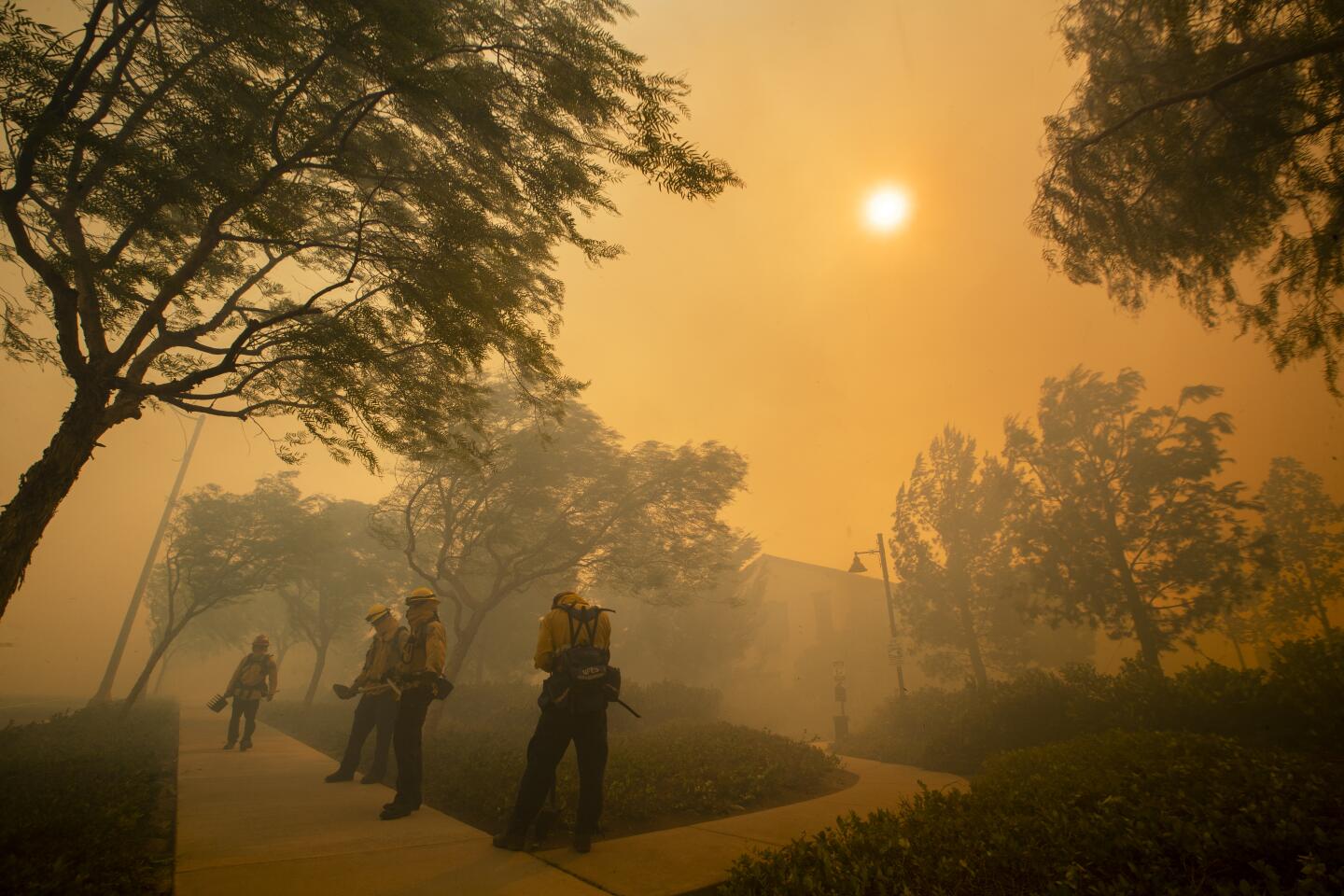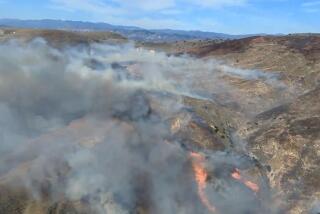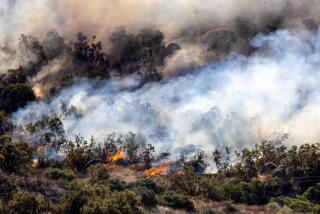Orange County fires burn more than 27,000 acres, as some Irvine evacuation orders are lifted
Ash swirled, and the stench of smoke hung in the air Tuesday as a light haze settled over southern Orange County. Cars lined Glenn Ranch Road as motorists paused to watch smoke billowing from a cluster of hills in the direction of Silverado Canyon Road.
At least two firefighting planes circled the area. A firetruck blared its siren down the hill.
It had been barely 24 hours since a pair of wind-driven wildfires ignited and encroaching flames forced 100,000 residents to flee their homes.
The first, the Silverado fire, broke out shortly after 6:45 a.m. Monday in the brush country around Santiago Canyon and Silverado Canyon roads. By 8 p.m. Tuesday, firefighters had achieved 5% containment on the blaze, which had burned through more than 13,000 acres — sparing structures but injuring five firefighters, including two who were critically burned.
The firefighters, ages 26 and 31, were placed on ventilators after suffering second- and third-degree burns over half their bodies. They “remain in critical condition, fighting for their lives, with their families by their sides,” Orange County Fire Authority Chief Brian Fennessy said Tuesday.
Fennessy said the firefighters’ families had received an outpouring of support, including notes, emails and texts from all over the country, but it was “tough for any firefighter — certainly any fire chief — to feel this helpless.”
Hours after the Silverado fire ignited, the Blue Ridge fire erupted in Santa Ana Canyon — a notorious wind tunnel said to have given the blustery Santa Anas their name.
The flames spread quickly as the fire pushed west toward Yorba Linda, threatening the town’s Hidden Hills community. By Tuesday evening, the blaze had surpassed its predecessor, engulfing more than 15,000 acres and damaging at least 10 homes. Firefighters had not been able to achieve any containment on the growing blaze.
The two fires spurred multiple evacuation orders and warnings, but the city of Irvine on Tuesday afternoon was beginning to allow some evacuees to return home, as dangerous winds began to subside. Residents can refer to the O.C. emergency public information map to check the status of their neighborhoods.
The South Coast Air Quality Management District issued smoke and windblown dust advisories across Southern California due to wildfires.
Gov. Gavin Newsom on Tuesday said California had received a fire management assistance grant from the Federal Emergency Management Agency that will allow the state to receive 75% reimbursements for firefighting efforts related to the Silverado and Blue Ridge fires. The grant is provided through the president’s Disaster Relief Fund on a cost-share basis.
“I want to thank FEMA and our partners at the federal level for their support,” Newsom said.
He said 42 fires had ignited across the state in the previous 24 hours, many fueled by fierce winds. He thanked the California Department of Forestry and Fire Protection, along with local firefighting agencies, for their quick work in suppressing most of the blazes.
“We talk in historic terms,” he said, “and I remind you that six of the top 20 wildfires in our state’s history have occurred in 2020.”
More than 4 million acres have burned this year, and wildfires across the state have resulted in at least 30 fatalities, he said.
“This is absolutely a large mutual-aid fire, a lot of resources from all over the state,” Orange County Fire Authority Capt. Jason Fairchild said Tuesday, noting that more than 1,700 firefighters are battling the two blazes. “And we have additional resources coming in from farther away.”
Facing flames that could threaten multiple homes at once amid the county’s suburban sprawl, firefighters have been relying on their engines’ 500-gallon water tanks instead of connecting to hydrants so the crews aren’t “anchored down,” Fairchild said.
If the water supply were to become an issue, many of the engines are outfitted with pumps that would allow them to pull water from homeowners’ pools, he said.
The strong winds fueling the blazes were expected to dissipate Tuesday afternoon, although a red flag warning remains in effect in Orange County until 6 p.m., said Casey Oswant, meteorologist with the National Weather Service in San Diego.
Despite slowing gusts, she said, people should not “completely relax,” as dryness is still a concern across the region.
“Definitely avoid burning if necessary, and if you see a fire, call the authorities,” Oswant said. “The threat is definitely still there, even though the winds are coming down.”
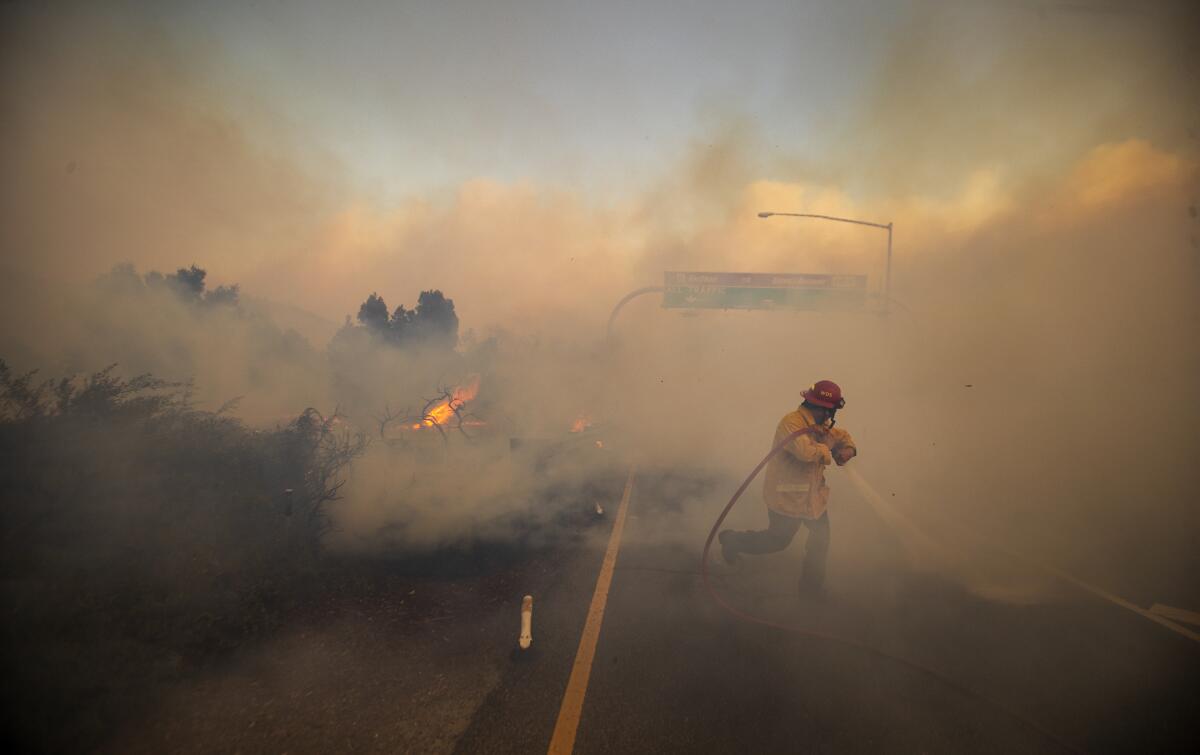
Monday’s combination of intense winds and low humidity were considered some of the most dangerous fire weather conditions of the year. The weather service reported gusts of 96 mph in the San Gabriel Mountains just south of Santa Clarita.
The winds also carried ash and soot left from the Bobcat fire earlier this month back into the skies, further choking Southern California with bad air.
By Tuesday morning, the government’s air quality monitoring agency had reported that Southern California had the worst air quality in the nation, with parts of Los Angeles and Orange counties and the city of Corona all hovering in the “unhealthy” range.
The South Coast Air Quality Management District issued a smoke advisory for Orange County through Tuesday. It also issued a windblown dust and ash advisory in Los Angeles, Orange, San Bernardino and Riverside counties, warning that hazardous particulate matter from wildfire areas may be spread through the air.
The windy conditions spurred Southern California Edison to warn customers in all of Los Angeles and Ventura counties, except for the Antelope Valley, that power could be shut off to lower the chances of fires being sparked by downed power lines.
As of Tuesday evening, about 5,500 customers remained without power, mostly in San Bernardino County.

The strong winds hindered firefighting efforts on Monday; water-dropping aircraft had to be pulled off the Silverado blaze around 10:30 a.m. The aircraft remained grounded through the afternoon.
In Irvine, many parks remained closed. UC Irvine said Monday it was suspending campus operations through Tuesday.
For Orange County residents in the paths of the fires, Monday and Tuesday were spent fleeing the fires or preparing to do so.
Marc Church, 63, joined a row of passersby who were snapping photos of the burning canyon Tuesday. The smoke had lessened from the previous day, he said, motioning to the hills, where patches of charred black peeked through the brown haze.
Church lives in Mission Viejo, where he moved a year and a half ago from Irvine because his wife wanted to be closer to the hills. Now, they fear the wind could carry burning embers and ignite their backyard.
“It’s a risk whenever you move near these hills,” he said.
The family had packed a few boxes of important documents — car titles, birth certificates, bank information — and spent the morning gathering other necessities, including clothes, computers and chargers. They took shifts sleeping and keeping watch overnight, he said, and awoke to voluntary evacuations and the sound of helicopters circling overhead.
“We didn’t get a lot of sleep,” Church said, adding that if the evacuation orders became mandatory, they would load up the car. “If we have to go, we’ll have to go.”
A similarly frightening scene had unfolded Monday, when trash cans and palm fronds were swept along empty streets in evacuated neighborhoods.
Lana Salameh, 45, had just dropped off her two youngest children at school and returned home in Irvine’s Eastwood community when she realized the sky was a dull orange. Trees were falling from heavy winds, and smoke was seeping into the house, but she had not been informed that school was canceled.
She hustled back to Eastwood Elementary School to grab her 9-year-old daughter, Farah Abdelbari, whose tears were soaking her pink mask. She then picked up her 11-year-old son, Omar.
“They were scared. It wasn’t easy,” Salameh said. “My kids were crying, but we had to leave.”
They grabbed their passports and some bananas before arriving at an evacuation center set up at Quail Hill Community Center, which was reaching capacity.
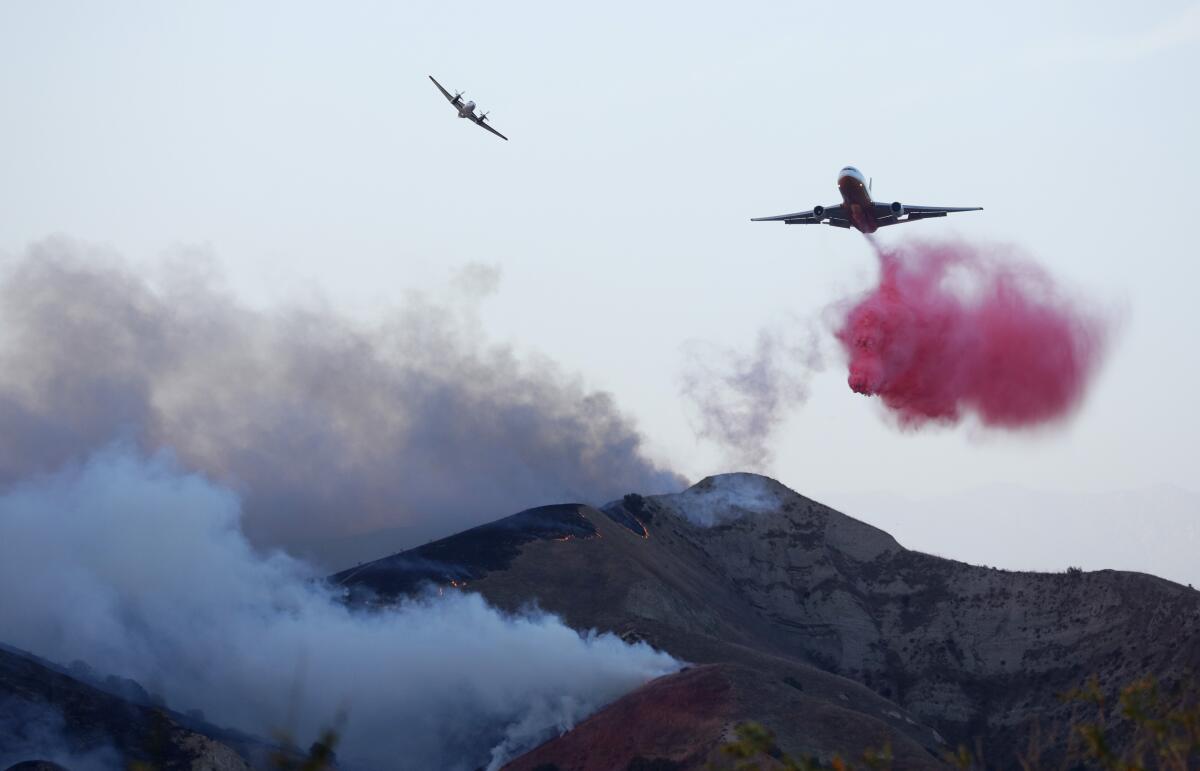
Inside, about 30 people sat at socially distanced desks; small dogs were tied to table legs. Many people were searching laptops for news reports of the fires. Salameh’s children got to work on school assignments.
Esther Lee, 55, and dozens of others waited in the parking lot for spots to open inside.
Hours before, Lee had been packing at her home in Lake Forest around 9:30 a.m. when she received a mandatory evacuation notice. Looking outside, she saw palm trees bending hard in the wind and smoke pouring down from the hill. She knew what she had to do.
Lee rushed to put important documents in her car and drove to a nearby park to coordinate with other family members.
“We didn’t have much time, and I didn’t want to stay too long,” Lee said. “We’re just staying put for now because the winds can be so unpredictable.”
Pat McGrath, 78, was making breakfast when a stranger pounded on her front door to inform her of the evacuation orders. The Irvine woman has no family on the West Coast.
“I just panicked. I started crying,” McGrath said. “I’m cold, I’m hungry, I’m stressed, and I don’t know what to do.”
Her voice was faint as she reclined into her seat at the Quail Hill Community Center with a beige cardigan draped over her.
“I was hoping there would be food or water, but I only got a bottle of water from a woman here earlier,” she said. “There’s a fountain down the hall, but I forgot my cane, and my legs don’t work too well. I think your body doesn’t work as well when you’re stressed.”
Lorraine Elewaut’s firefighter brother called from Washington on Monday, when the Silverado fire burst into Irvine near the Elewauts’ Skyridge home.
“You need to have your emergency kit ready,” he admonished her.
His call, and the howling winds, kept the 67-year-old up all night while her husband, Bob, 75, slept soundly. In the morning, a call from the Orange County Fire Authority about voluntary evacuations prompted Elewaut to fly into action. She packed birth certificates, lease agreements and “of course, the photos.”
“It made me realize how little prepared I was,” she said.
Since the COVID-19 pandemic, the Elewauts have kept a robust store of supplies, but Lorraine said she found necessities scattered around the house.
Her brother called again Tuesday morning with another cautioning message, and a laugh: “Don’t forget to pack the alcohol.”
John Lologo, 49, fiddled in his garage in the Yorba Linda neighborhood of Country Hills, which was under voluntary evacuation orders Tuesday afternoon.
Blackened palm fronds had blown in and lined his driveway, and clumps of ash floated to the ground. In the distance, three separate smoke plumes billowed from the hills where the Blue Ridge fire was burning.
Lologo said he took a drive through Riverside on Tuesday morning and saw flames leaping over the Chino hills. Soon after he returned home, local authorities knocked on his door to announce voluntary evacuations.
Lologo had planned a trip to Utah to coach a softball game Friday, so his bags were already packed. But he doesn’t expect to leave before then.
“I’m not going to leave until it’s mandatory, and even then, I’ll probably stay,” he said. “I’m far enough away from everything that even if it burns down to the end of the block, I don’t perceive too much happening this side of the street.”
Adriana Cruz and her daughter Roxana, 11, had to evacuate their Yorba Linda home and stayed in a hotel Monday night. With the two of them and their lumbering dog, Jacqs, penned up in a crate, the room was crowded.
The Cruz family brought Jacqs to the OC Animal Care shelter in Tustin, which was welcoming evacuees’ small animals. Jacqs would stay Tuesday night while Cruz and her daughter waited to learn more about their neighborhood.
The whole process was “confusing,” Cruz said while wiping out the dog’s crate with a towel.
As for when the family could return home, Cruz shook her head.
“We don’t know.”
Times staff writers Joseph Serna, Alex Wigglesworth, Alejandra Reyes-Velarde and Joe Mozingo contributed to this report.
More to Read
Start your day right
Sign up for Essential California for news, features and recommendations from the L.A. Times and beyond in your inbox six days a week.
You may occasionally receive promotional content from the Los Angeles Times.

